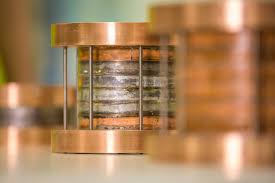
Breaking News
 Is Yen Carry Trade's unwind about to trigger a repo market meltdown? Let's dive into the mec
Is Yen Carry Trade's unwind about to trigger a repo market meltdown? Let's dive into the mec
 Chairman Rand Paul Releases New Report Revealing Hundreds of Billions...
Chairman Rand Paul Releases New Report Revealing Hundreds of Billions...
 Get Schiffty Music Video | Rick and Morty | Adult Swim
Get Schiffty Music Video | Rick and Morty | Adult Swim
Top Tech News
 This tiny dev board is packed with features for ambitious makers
This tiny dev board is packed with features for ambitious makers
 Scientists Discover Gel to Regrow Tooth Enamel
Scientists Discover Gel to Regrow Tooth Enamel
 Vitamin C and Dandelion Root Killing Cancer Cells -- as Former CDC Director Calls for COVID-19...
Vitamin C and Dandelion Root Killing Cancer Cells -- as Former CDC Director Calls for COVID-19...
 Galactic Brain: US firm plans space-based data centers, power grid to challenge China
Galactic Brain: US firm plans space-based data centers, power grid to challenge China
 A microbial cleanup for glyphosate just earned a patent. Here's why that matters
A microbial cleanup for glyphosate just earned a patent. Here's why that matters
 Japan Breaks Internet Speed Record with 5 Million Times Faster Data Transfer
Japan Breaks Internet Speed Record with 5 Million Times Faster Data Transfer
 Advanced Propulsion Resources Part 1 of 2
Advanced Propulsion Resources Part 1 of 2
 PulsarFusion a forward-thinking UK aerospace company, is pushing the boundaries of space travel...
PulsarFusion a forward-thinking UK aerospace company, is pushing the boundaries of space travel...
 Dinky little laser box throws big-screen entertainment from inches away
Dinky little laser box throws big-screen entertainment from inches away
 'World's first' sodium-ion flashlight shines bright even at -40 ºF
'World's first' sodium-ion flashlight shines bright even at -40 ºF
Tokamak Energy Has 24.4 Tesla High Temperature Superconducting Magnets...

The magnet is wound from REBCO (Rare earth – Barium – Copper Oxide) HTS tape. This conduction-cooled all-REBCO magnet achieved its peak field at 21K in a cold bore of 50 mm, which we believe to be record performance. In superconducting terms, 21K is a relatively high temperature. Additionally, the magnet is extremely robust, reliable and simple to manufacture. The engineers have been impressed by the defect tolerance of the coils and their response to a sudden loss of superconductivity, called a quench.
The achievement is an important milestone on the route to commercial fusion energy because high magnetic fields are necessary for tokamak machines to trap the hot fusion fuel, which is in the form of an electrically-charged gas called plasma. High temperature superconducting materials will facilitate the higher magnetic fields necessary for efficient commercial fusion reactors.
The progress of the HTS team has been faster than expected with milestones being hit well ahead of schedule (this milestone was scheduled for late 2020). The next step is to scale up these magnets into the configuration required for tokamaks.



